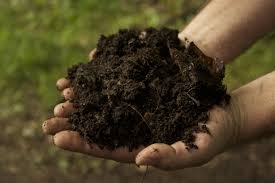
As a gardener, I consider soil as the foundation for all I do. Like a friendship or marriage, it must be respected and nurtured if you want it to thrive and continue to be there for you. What soil isn't is dirt.
I recently read an article in The New York Times by Dan Barber, the chef and co-owner of the two Blue Hill restaurants in New York. In the article, he wrote about how much he liked a locally grown emmer,a wheat variety also known as farro. He had been extolling the virtues of this grain, but it wasn't until he visited the farm that he realized what made the emmer so delicious.
The farmer managed the soil not by adding chemicals but by rotating crops and including cover crops in the rotation. Crop rotation improves soil health which, in turn, affects the flavor of the food grown in it.
Crop rotation is another subject Master Gardeners learn about in training, and we preach it in the public workshops we offer. I thought I knew something about this subject, but after reading Dan Barber's article, I realized I had only scratched the surface in understanding its impact on soil. The article was about farming and not gardening but the same principles apply.
The practice of crop rotation has been around for centuries, and it takes many forms. It entails planting vegetable crops of the same family in different locations each year. What you plant, and the order in which you plant,makes a difference.
The reason for rotating crops is straightforward enough. Plants related to each other tend to be prone to the same diseases and insect pests. In my pre-Master Gardener days, I thought I was practicing good crop rotation when I planted tomatoes one summer, followed by potatoes in winter and chilies the following summer. But the chili plants were yellowish-green and produced scraggly, rumpled fruit, so I knew I had a problem.
These plants are all in the Solanaceae, or nightshade, family, so my crop-rotation plan was a failure. To correct my mistake, I had to take these beds out of production for a year and solarize the soil. In a nutshell, this technique involves removing all plant matter, wetting the soil, covering it with a plastic tarp and letting it bake for six to eight weeks in summer. Afterward, I planted a cover crop of fava beans.
Cover crops (also called green manure) are an integral part of crop rotation. They build productive soil, help control pests and diseases, attract beneficial insects, prevent erosion and suppress weeds.
Cover crops include grasses such as barley, oat, wheat and cereal rye; legumes like vetches, bell beans, field peas, clovers, cowpeas; and mustards of various types. All are low maintenance and require little water. To get the maximum benefit, cut the cover crop at the base when it flowers or when the seed heads emerge on grains. You can either incorporate the vegetation into the soil or allow it to decompose on the soil surface.
If growing a cover crop is not your thing, then follow another practice that Master Gardeners recommend: add compost. And we're not talking about just a little. Spreading several inches of compost on vegetable beds before planting should dramatically improve your harvest.
The next time you harvest a tasty ‘Early Girl', ‘Black Krim' or ‘Hawaiian Pineapple' tomato, remember that the soil contributed more to flavor than the variety did. On the other hand, if the tomato is tasteless and mealy, don't blame it solely on the variety. Think about how you managed the soil during the growing season.
Workshop: Napa County Master Gardeners will conduct a workshop on “Pruning Landscape Trees and Shrubs” on Sunday, June 22, from 2 p.m. to 4 p.m., at the Yountville Community Center, 6516 Washington Street, Yountville. Proper pruning enhances the beauty of landscape trees and shrubs while improper pruning can reduce their landscape potential. Learn guidelines for proper pruning. This workshop may include a field trip to observe pruning in a local garden. To register, call the Parks & Recreation Department at 707-944-8712 or visit its web site.
Master Gardeners are volunteers who help the University of California reach the gardening public with home gardening information. Napa County Master Gardeners ( http://ucanr.org/ucmgnapa/) are available to answer gardening questions in person or by phone, Monday, Wednesday and Friday, 9 a.m. to Noon, at the U. C. Cooperative Extension office, 1710 Soscol Avenue, Suite 4, Napa, 707-253-4143, or from outside City of Napa toll-free at 877-279-3065. Or e-mail your garden questions by following the guidelines on our web site. Click on Napa, then on Have Garden Questions? Find us on Facebook under UC Master Gardeners of Napa County.
Napa County Master Gardeners welcome the public to visit their demonstration garden at Connolly Ranch on Thursdays, from 10:00 a.m. until noon, except the last Thursday of the month. Connolly Ranch is at 3141 Browns Valley Road at Thompson Avenue in Napa. Enter on Thompson Avenue.